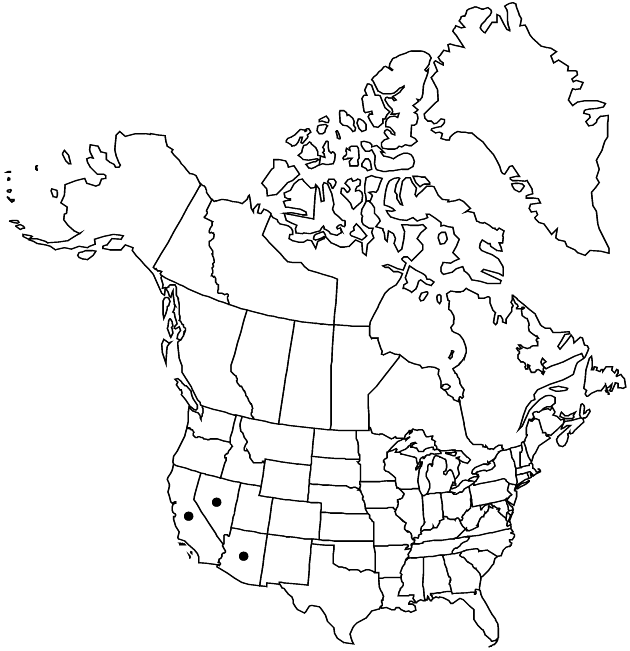Encelia frutescens
Proc. Amer. Acad. Arts 8: 657. 1873.
Basionym: Simsia frutescens A. Gray in W. H. Emory, Rep. U.S. Mex. Bound. 2(1): 89. 1859
Revision as of 23:11, 29 July 2020 by imported>Volume Importer
Subshrubs or shrubs, 50–150 cm. Stems with slender branches from trunks, glabrous, developing fissured barks. Leaves cauline; petioles 2–7 mm; blades green, elliptic or narrowly ovate, 10–25 mm, apices obtuse, faces strigose. Heads borne singly. Peduncles strigose. Involucres 6–12 mm. Phyllaries lanceolate. Ray-florets 0. Disc corollas yellow, 5–6 mm. Cypselae 6–9 mm; pappi 0 or of 2 bristlelike awns. 2n = 36.
Phenology: Flowering Feb–May, Aug–Sep.
Habitat: Desert washes, flats, slopes, roadsides
Elevation: 0–800 m
Distribution

Ariz., Calif., Nev., Mexico (Baja California), Mexico (Sonora)
Discussion
Plants of Encelia frutescens in the flora area are var. frutescens; var. glandulosa C. Clark, with glandular, strigose leaves, is found in northeastern Baja California and is not expected here.
Selected References
None.
Lower Taxa
None.
"broader" is not a number.
... more about "Encelia frutescens"
introrse +
connate +
herbaceous +
obtuse +
scarious +
absent +
hirsute +
papillate +
bristlelike +
continuous +
developing +
fissured +
cuneate +
green +
ovate;elliptic +
winged;ribbed;winged;ribbed +
1;15 +
stigmatic +
absent +
zygomorphic +
winged +
dimorphic +
6mm;9mm +
staminate +
staminate +
straight +
strigose +
scabrellous +
distinct +
proximal +
1;5 +
bisexual +
dispersed +
singly +
discoid +
singly +
indeterminate +
surrounding +
hemispheric +
petiolate +
alternate +
cauline +
triangular +
toothed +
2-carpellate +
inferior +
attached +
anatropous +
persistent +
fragile +
falling +
absent +
of 2 bristlelike awns +
strigose +
tough +
thick +
absent +
connate +
persistent +
distinct +
falling +
Proc. Amer. Acad. Arts +
1873 +
neuter +
absent +
paleate +
convex;flat +
fibrous +
exalbuminous +
modifed +
2;3 +
alternate +
branched +
erect +
glabrous +
continuous +
2-branched +
papillate +
Encelia frutescens +
Encelia +
species +
expanded +
equaling +
shorter +
cylindric +
shorter to longer than campanulate +
perennial +